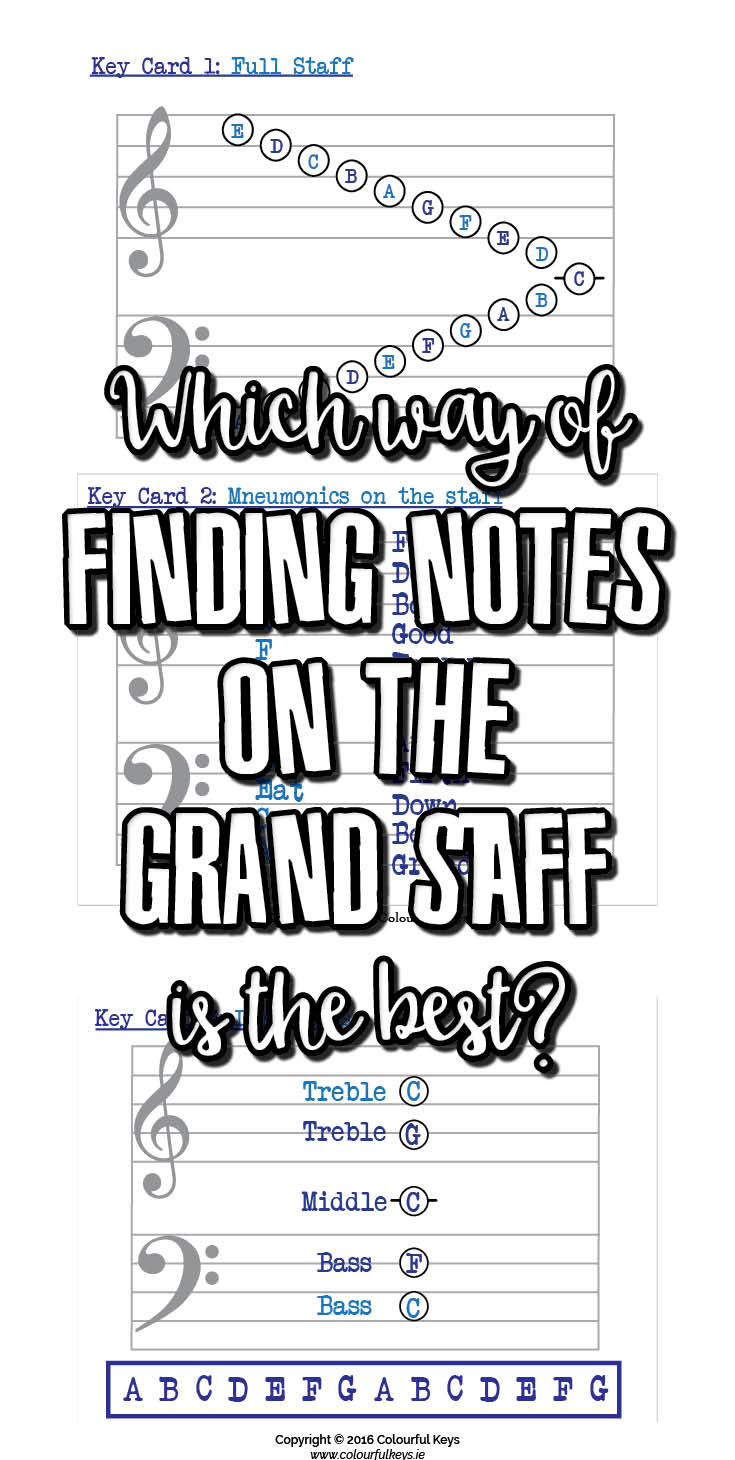I was taught to identify note using the traditional mnemonics. These days however, most teachers are moving towards landmarks notes combined with intervallic reading. Is it right for a whole studio to be using one or the other?

Ultimately, I think we’d all agree that we want instant recognition. None of us teachers use any kind of system anymore, we just know the notes. Most beginners will use some kind of a system at first, until they get to that stage.
3 Note Identification Methods
Mnemonics
The old not-so-reliable. For most piano students, this is the slowest method. They forget which one is which, and by the time they remember the correct rhyme, they could’ve just worked their way up from a point of reference.
However, very occasionally, I do get a student who this method suits. Usually, this only happens with older beginners. They won’t be using the mnemonics for long, but it does make something click for them. Here are the ones I use:
- Treble spaces: FACE
- Bass spaces: All Cows Eat Grass
- Treble lines: Every Good Boy Deserves Fruit
- Bass lines: Grandma Boogies Down Fifth Avenue
I will add the caveat though, that I don’t recommend using both lines and space mnemonics. Just pick one (normally spaces) and work out the other from there.
Landmark Notes
The best option for most piano students. Once they have the landmark notes, they can work their way up or down from there. The usual landmark notes are Bass C, Bass F, Middle C, Treble G and Treble C. I like to use games that reinforce these key notes like my Landmark X’s and O’s.
Piano Anne created these fantastic videos for younger students, that make them super easy to remember.
If you’re looking for more fun ways to practice landmark notes, definitely check out the Landmark Xs and Os game (it’s free!).
Line and Space “Words”
Obviously FACE really is a word, but EGBDF, ACEG, and GBDFA aren’t. If you say them enough times however, they can sound like words! There’s an old piano method that I used to use with some students called “Jibbidy F and A-C-E”, that plays on this idea in its name.
Test them out!
With my level 1 piano students, I’ve been using my Fiendish Fishiness Flashcards as a kind of experiment. There are matching ‘Key Cards’ included in the flashcard set that can be placed in front of the student while they drill the flashcards.
I like to try out the different Key Cards to see what works best for each student, not just which one allows them to get through all the cards faster, but which one they need to turn over less often if it’s placed upside down in front of them.
What way do you teach note names?
Which note identification method is your favourite? Have you relegated the mnemonics completely to the past, or do you still find them useful?

I scrapped teaching mnemonics for landmark notes instead last year. It’s good to see another teacher discuss them in the same way. (Thought you might want a heads up, though- in your post when you listed the landmark notes, you said Treble G twice, slip of the typing fingers?)
I learned years ago with mnemonics and it worked like a charm for me. It’s not gelling with my students, though. I’m unsure about the landmark notes, because who wants to count up or down the staff when you’re sightreading? Ugh. I have tried to use flashcards with one student who has a hard time but they only work as much as the student will practice them at home. I will definitely try your game!